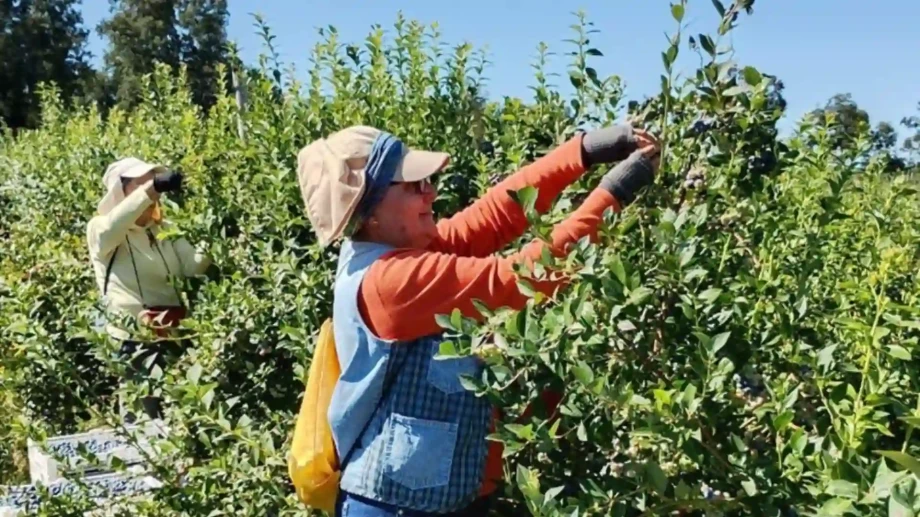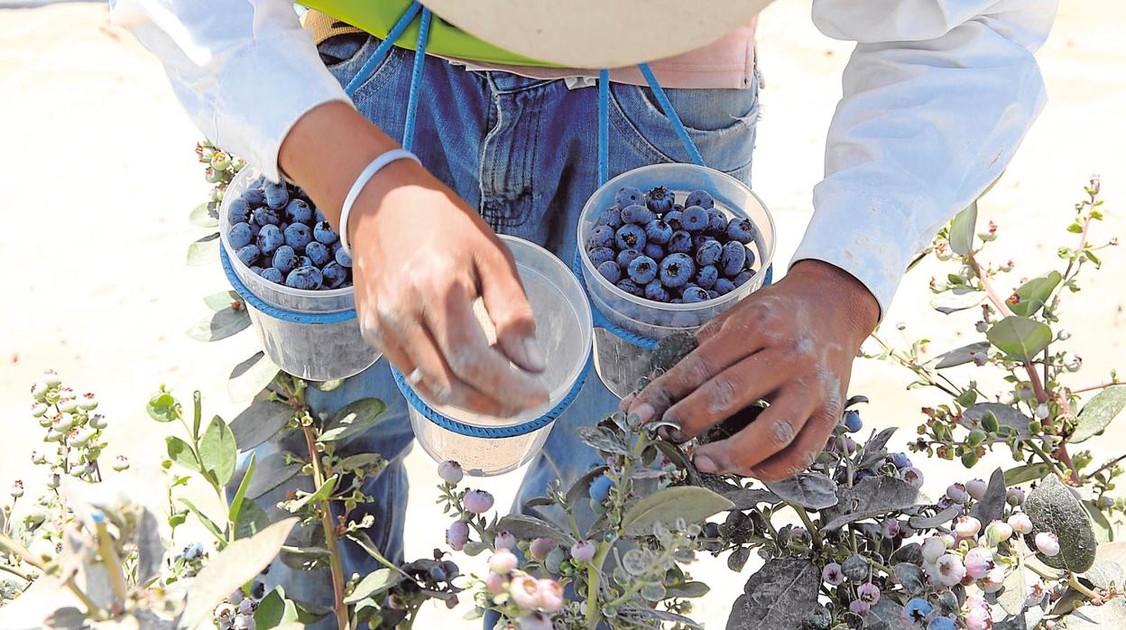Mexico leads the ranking with 279,000 tons, followed by Poland with 94,000 and the United States with 72,000.
During the same period, Chile reached a production of 16,083 tons of raspberries, 97.30% of which is destined for the frozen food industry, while the remainder is used for puree (2.32%), dehydrated (0.06%), and juice (0.33%).
Raspberry cultivation
Traditionally, raspberry cultivation in Chile has been concentrated in the central area, from Maule to Biobío, which accounts for 76% of national production.
But the scenario is changing. Cultivation is moving further south, with numerous projects underway in colder, water-rich areas, particularly in the Los Ríos and Los Lagos regions.
Why southern Chile?
One of the key factors is the climate. Cooler temperatures are less favorable to Drosophila suzukii, a small fruit fly detected in Chile in 2017 that attacks numerous fruit crops and, increasingly, wild berries.
In addition, raspberries grow quickly, and some varieties adapt well to cooler climates.
This crop has also regained momentum thanks to the reduction in blueberry acreage, which has pushed producers to seek alternative crops that can be processed with the same facilities.
In the past four years, over 180 hectares of raspberries have been planted in southern Chile, with projects underway that could add another 300 hectares in the next five years.
Varieties grown and innovation
Currently, 70% of the cultivated area is occupied by the Heritage variety, followed by Meeker (10%), and other varieties such as Chilliwack, Amity, and Santas (20%).
According to Jorge Rodríguez, Commercial Director of Agromillora Sur, “in southern Chile, cultivation is developing significantly with varieties such as Wakefield and Cascade Harvest, which offer higher productivity per hectare and are suitable for mechanical harvesting.”
He adds that Meeker is still used in some projects: “It is a well-known variety, with lower yields, but excellent packing rates and good potential for mechanization.”
Field activities
Agrícola Santa Carmen is one of the companies betting on this new direction. Its General Manager, Rodrigo Varela, stated that most projects south of Biobío are adopting the Meeker and Wakefield varieties.
“The climatic conditions are favorable, and with the return of plantations to the south, harvesting must be mechanized due to the labor shortage,” he explained.
“Wakefield was developed specifically for mechanical harvesting and high-density cultivation. The fruit is firm, with good productivity and less loss during processing, a highly valued aspect for companies,” he added.
Agrícola Trucao has also returned to raspberry cultivation. General Manager Nicolás Díaz said they started with the Meeker variety due to previous experience and its high soluble solids content (Brix degrees).
Díaz added that the company is part of Bayas del Sur, which produces concentrated juices and freeze-dried powders from various species: “So Brix degrees are fundamental for yield in the production of these products.”
He also stated: “We are testing other varieties – a Cascade trial is already underway – as well as other berry species, always with a focus on the berry industry.”
Outlook and conclusions
Analyzing production potential, Díaz stated that with the Meeker variety it is possible to exceed 12,000 kg per hectare, although “it is important to consider how much of that harvest is actually collectable. Some varieties exceed 18,000 kg, but with different characteristics, so it all depends on the producer’s business model.”
Varietal replacement is revitalizing raspberry production in Chile, offering better yields to producers in the south.
In an interview with Freshfruitportal.com, Rodrigo Díaz expressed hope that the increased supply will not negatively affect prices paid to producers, as has happened in the past. “The key will be to maintain high quality and yields,” he stressed.
He highlighted an important issue for the sector: the costs of manual harvesting, which are increasingly difficult to bear – not only because of the cost, but also due to numerous variables that complicate the process.
“That is why mechanization is essential, especially for products destined for freezing or quick processing,” said Díaz.
He also added that varietal replacement has both positive and negative aspects, which need to be carefully assessed.
“Uncontrolled or excessive growth can have a boomerang effect, generating instability. It is not easy for companies to decide to adopt new varieties.”
“It is essential that plant producers, growers, processors, and the market work in synergy in this raspberry revival.”
Text and image source: freshfruitportal.com









